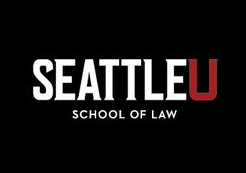
Location
Zoom Recording Available at Link Below.
Event Website
https://media.law.seattleu.edu/Playlist/c2G6Rpd7?destinationID=4AUx5RIOEkqKZ8DZ1XLNHw&contentID=5zf4n7A_EkuO0MBCTBolWQ&orderBy=videoTitle&orderByDirection=asc&pageIndex=1&pageSize=10
Start Date
13-6-2020 1:00 PM
End Date
13-6-2020 2:05 PM
Description
ABSTRACT: What Would it Take to Connect All of Greater Seattle’s Neighborhoods with Walking and Biking Trails?
Major U.S. cities have endeavored, independently of each other, over the past several decades to create greenway systems connecting residents and visitors with neighborhoods and attractions, increasing opportunities for walking and biking and reducing their reliance on vehicular traffic. Atlanta’s BeltLine--a twenty-two-mile loop of historic railroad right-of-ways encircling the city’s downtown and midtown areas, seeks to reinvent the city if transformed into a green corridor—is perhaps one of the best examples of how a Seattle Greenway might be accomplished (although Atlanta’s concerted efforts through BeltLine.org are still considered a “work in progress” after fifteen years). The mostly abandoned rail corridor connects 45 diverse neighborhoods, including many of the city's most underserved by parks. A December 15, 2004, Trust for Public Land (TPL) report showed that revitalizing the BeltLine would provide an extraordinary opportunity for economic development—including affordable housing—and to connect communities through green space. The Highline, in Manhattan’s Chelsea neighborhood, and Chicago’s 606, are morerecent examples of such endeavors to integrate greenspaces into densely populated urban areas. What are the political and legal steps the greater Seattle area would need to take to develop a greenway in the Emerald City that connects well-established, densely populated neighborhoods to employment centers and recreational amenities, such as parks and shorelines?
Included in
Environmental Indicators and Impact Assessment Commons, Environmental Law Commons, Environmental Monitoring Commons, Housing Law Commons, Land Use Law Commons, Law and Economics Commons, Law and Race Commons, Law and Society Commons, Legislation Commons, Property Law and Real Estate Commons, Science and Technology Law Commons, Securities Law Commons, Sustainability Commons
SESSION 4: Atlanta Beltline
Zoom Recording Available at Link Below.
ABSTRACT: What Would it Take to Connect All of Greater Seattle’s Neighborhoods with Walking and Biking Trails?
Major U.S. cities have endeavored, independently of each other, over the past several decades to create greenway systems connecting residents and visitors with neighborhoods and attractions, increasing opportunities for walking and biking and reducing their reliance on vehicular traffic. Atlanta’s BeltLine--a twenty-two-mile loop of historic railroad right-of-ways encircling the city’s downtown and midtown areas, seeks to reinvent the city if transformed into a green corridor—is perhaps one of the best examples of how a Seattle Greenway might be accomplished (although Atlanta’s concerted efforts through BeltLine.org are still considered a “work in progress” after fifteen years). The mostly abandoned rail corridor connects 45 diverse neighborhoods, including many of the city's most underserved by parks. A December 15, 2004, Trust for Public Land (TPL) report showed that revitalizing the BeltLine would provide an extraordinary opportunity for economic development—including affordable housing—and to connect communities through green space. The Highline, in Manhattan’s Chelsea neighborhood, and Chicago’s 606, are morerecent examples of such endeavors to integrate greenspaces into densely populated urban areas. What are the political and legal steps the greater Seattle area would need to take to develop a greenway in the Emerald City that connects well-established, densely populated neighborhoods to employment centers and recreational amenities, such as parks and shorelines?
https://digitalcommons.law.seattleu.edu/sitie_symposium/itbe2020/june13/6


Comments
Featured Speaker: Art Lansing, Seattle University School of Law ’20, Masters in Urban and Regional Planning; University of Washington, College of Built Environments ’22 Department of Urban and Regional Planning “Atlanta’s BeltLine: A Case Study”
Panel Discussion: Rob Turner (Moderator), Esq. Seattle University School of Law ’98; InTown Legal, Seattle, WA; Art Lansing, Featured Speaker; Jim Langford, President, MillionMile Greenway, Atlanta, GA; Kristen Lohse, ASLA, Senior Urban Designer; Toole Design Group, Associate, Seattle, WA; Claire Martini, Manager, Leafline Trail Coalition, Seattle, WA